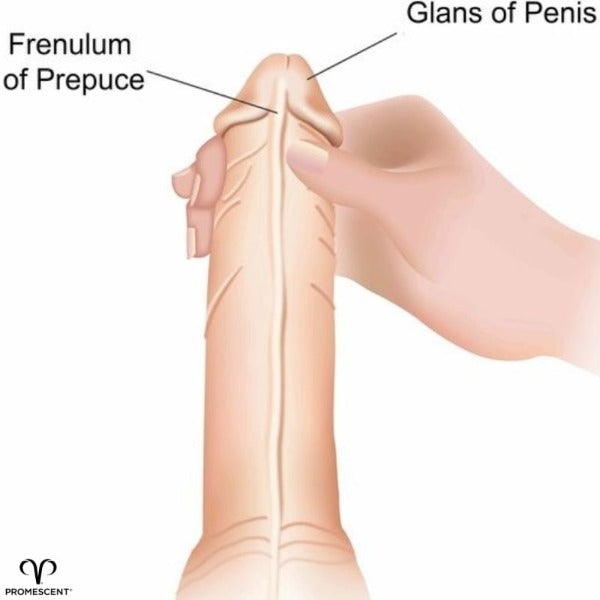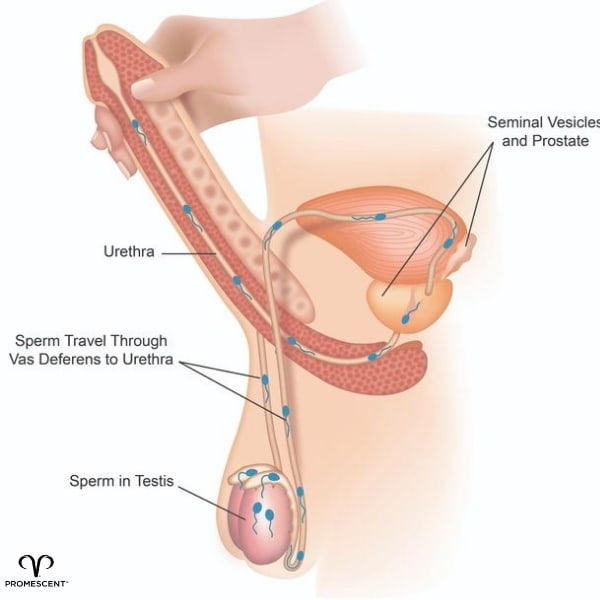Premature ejaculation can be embarrassing, but there are many proven methods you can use to last longer in bed, like, the squeeze technique.

2,897 reviews


2,897 reviews

Every guy wants to perform well between the sheets—and the squeeze technique might help you to do just that for those looking to last longer in bed.
This is one of many exercises that sex therapists and other sex experts often recommend to help with premature ejaculation (PE).
Some men find that it does wonders but, as with every sexual performance exercise, it doesn’t work for everyone.
The squeeze technique is typically one of the first premature ejaculation exercises that men try because it is easy to learn, it’s free, and it does not require any special equipment.
However, timing is everything and a high level of self-control is a must in order for it to be mastered.
In this article, we’ll cover step-by-step instructions on how to do the squeeze technique.
With careful concentration and self-control, you just might find that this technique is exactly what you needed to build bedroom confidence.
But first, let's cover the basics and most frequently asked questions about the technique.
The squeeze technique is an exercise that can help men last longer by firmly squeezing near the tip or base of the penis at just the right time to stop ejaculation.
Start by arousing yourself until you're getting close to climaxing. Stop immediately, and apply firm pressure by squeezing your frenulum or base of the penis for 15-20 seconds. Continue applying pressure until the urge to ejaculate subsides. See a trusted, step-by-step manual below.
A common alternative to the squeeze technique is called “edging” or the start-stop method. You can also try using a delay spray like Promescent® to reduce sensitivity for quick results. Learn more by reading below and checking out our full guides on other common performance exercises.

Developers of ‘The Squeeze Technique’, Virginia Johnson (left) and William Masters (right).
In the 1950s, the pioneers of the modern sex therapy movement, William Masters and Virginia Johnson, were changing the way Americans thought about and experienced sex.
Masters and Johnson were among the first American researchers to focus their academic work on helping people and couples to solve sexual problems and to study the physiology of sexual response.
They released multiple scientific papers and published several popular mass-market books on the subject.
While much of their work was theoretical, it also had a lot of practical applications.
One of their most widely used and enduring contributions to sex therapy was the development and popularization of an effective and free way of helping men control premature ejaculation.
In Human Sexual Inadequacy (published in 1970), Masters and Johnson called their new method ‘The Squeeze Technique’.
You may have heard people refer to this technique by several other names, such as 'the squeeze method’, 'the stop and squeeze’, or 'the pause squeeze technique,’ but they all refer to the same thing.
More than a half-century later, many guys around the world continue to use the squeeze technique in order to last longer in bed.
The squeeze technique for premature ejaculation works by manually preventing ejaculate from exiting the body. By applying pressure to the penis.
The idea is pretty straightforward, but to fully understand how and why it works, we need a quick penis anatomy lesson.

Look at the image above and find where the head of the penis meets the shaft. This area is called the frenulum.
This is what you need to target when using this technique.
Now, take a look at the internal diagram below. Notice the location of the urethra. The urethra is the tube that carries ejaculate out of the body.

By temporarily stopping sex and squeezing the penis at just the right time and in the correct place, it is possible to close off the urethra just enough to prevent ejaculation and extend intercourse.
While the idea behind this technique is simple, this doesn't mean that getting it to work is easy. In fact, it takes practice—a lot of practice. And that is not such a bad thing.
One of the best parts of the squeeze technique is its flexibility because you can try it on your own or with a partner.
To give you the most options, you can find descriptions below for doing it yourself, as well as a way to work with a partner.

If you don't currently have a partner or simply prefer to deal with PE by yourself, you can quite literally take this issue into your own hands.
Also, even if you intend to use the squeeze technique with a partner, it is often a good idea to practice on your own first.
Repeat the process four or five times—bring yourself to the edge, squeeze, pause, and resume—before allowing yourself to finally orgasm.
Don't be disappointed if you are unable to control your orgasm entirely on the first few tries. It will probably take multiple sessions to perfect the technique.

Finding a solution for your quick ejaculation with the help of your sexual partner can be a bonding experience, but make sure it is something she or he wants to do.
Both of you need to be on board when it comes to using this method because if not, it can decrease sexual satisfaction.
Repeat the process 4 to 5 times before allowing yourself to orgasm.
Be conscious of the enjoyment level of your partner, and make sure they are satisfied as well.
The simple answer is, yes, it usually does.
For example, Masters and Johnson reported that this method treated greater than 85 percent of patients successfully within three months. In light of these numbers, it would appear that this is a viable way to help many men treat premature ejaculation.
If this method is not working for you, however, all is not lost. There are several other ways to control PE that might work instead.
There's no current research that suggests the squeeze technique is harmful. If you're unsure, communicate with your doctor to make sure the technique is safe for you.
There are lots of different methods for treating PE, ranging from topical desensitizing sprays to condoms and exercise.
If you are looking for more tips to last longer in bed, you might want to try it out one or more of these alternatives:
Using a condom can help decrease the sensitivity of the penis, thus increasing a man’s chances of lasting longer; however, it may take a bit of experimentation to get this to work well for you.
If you are already wearing a condom but it’s not helping with PE, you may want to try one that's thicker.
Thicker condoms are typically sold as "extra safe" or "extra strength."
This wording is basically saying that the condom is thicker than normal, which is likely to decrease sensation.
Still not doing the trick? You can also try premature ejaculation condoms with pre-applied numbing gel on the inside.
However, be aware that some people who use condoms with numbing gel report too much of a general numbing sensation.
Also, these condoms need to be applied very carefully to ensure the numbing agent doesn’t affect your partner.
Instead of depending on a numbing condom that affects the entire penis, you can opt to pinpoint the most sensitive areas with Promescent delay spray.
The advantage of this over other methods is that delay sprays are easy to apply when and where you want, and you can decide how much to use.
It is a very personalized treatment that has been clinically shown to work on-demand and when you need it most.
When using climax control spray, transference to the partner is minimal and condoms aren’t needed if you and your partner prefer not to use them or don’t require them for contraceptive purposes.
Pro Tip: For a convenient on the go climax control option try Promescent Desensitizing Delay Wipes for premature ejaculation.
Some guys don't feel comfortable with the squeeze technique approach to control ejaculation.
For example, they may find that the pressure is a little painful or that the hand position is awkward.
If so, you may prefer to use the stop-start method instead. Many people like to call this method ‘edging’.

To use this technique, have sex as usual until you reach the brink of orgasm, then stop.
You do not necessarily have to withdraw, just stop thrusting until the urge to ejaculate subsides.
Once the urge passes, resume, stop when another orgasm is about to happen, and then repeat this cycle over and over until you are ready to climax.
Because there is nothing physically blocking ejaculation, the stop-start method can be more challenging to master than the squeeze technique for some guys.
However, it may be worth the effort.
Many men find that once they know what they are doing, the start-stop method not only helps to prevent premature ejaculation, but can also heighten the sensation of orgasm.
The PEA app is a free application for iOS and Android that can help you master this technique.

Many people only think of Kegel exercises as something that women do to tone and strengthen their pelvic floor following childbirth.
However, research shows that they are also a great way for men who experience premature ejaculation issues to gain greater control of their orgasms.
Unlike the squeeze technique or the stop-start method, Kegel exercises are not performed during sexual activity.
This is a form of isometric exercise that helps to strengthen certain muscles that are related to premature ejaculation as well as erectile dysfunction (ED).
Performing Kegel exercises are easy, and it only takes a few minutes per day.
First, you need to learn which muscles to focus your attention on. You can find these muscles by trying to stop urinating midstream.
Once you identify the muscles, one way to do a simple Kegel exercise is to tighten and hold those muscles for a five-second count.
Do this ten times in a row, two to three times per day, and you are well on your way to improving your sex life.
This overview just covers the basics of Kegel exercises.
You can learn a lot more about Kegel exercises and how they can help men here: Male Kegel Exercises to Last Longer: Step by Step Guide
When it comes to treating premature ejaculation, there are a lot of different options to consider.
The squeeze technique is a relatively quick and easy way to gain more ejaculatory control, but it may not be the right solution for you.
While it works just fine for some, others may find the technique to be uncomfortable or awkward.
Trying the technique while masturbating and then introducing it to your partner is likely to be the best approach.
It will make the process more comfortable and you’ll know just how much pressure to tell your partner to apply to your penis to ensure it works.
Just remember that practice makes perfect. And if it doesn’t work?
The good news is that there are plenty of other treatment options available, from over-the-counter products like Promescent to condoms to different exercises.
Check out some of the resources below to discover more about other techniques that could potentially help you improve your bedroom performance.
Dr. Justin Lehmiller is a social psychologist and Research Fellow at The Kinsey Institute. He is author of the blog Sex and Psychology and the popular book Tell Me What You Want: The Science of Sexual Desire and How It Can Help You Improve Your Sex Life. He is also a prolific researcher who has published more than 50 academic works, including a textbook titled The Psychology of Human Sexuality that is used in college classrooms around the world. Dr. Lehmiller is one of the media's go-to experts on sex and has been interviewed by The Wall Street Journal, The New York Times, and CNN; he has also appeared on dozens of radio, podcast, and television programs.
Absorption Pharmaceuticals LLC (Promescent) has strict informational citing guidelines and relies on peer-reviewed studies, academic or research institutions, medical associations, and medical experts. We attempt to use primary sources and refrain from using tertiary references and only citing trustworthy sources. Each article is reviewed, written, and updated by Medical Professionals or authoritative Experts in a specific, related field of practice. You can find out more about how we ensure our content is accurate and current by reading our editorial policy.
Gen Pract., Br J. 2004 November 01. Randomised controlled trial of pelvic floor muscle exercises and manometric biofeedback for erectile dysfunction. National Center for Biotechnology Information - British Journal of General Practice. www.ncbi.nlm.nih.gov/pmc/articles/PMC1324914.
Learn How To Last Longer In Bed. (n.d). Getpea. https://www.getpea.com/
Samuel G Deem, DO; Chief Editor: Edward David Kim, MD, FACS. 2021 May 25. How effective is the squeeze-pause technique in the treatment of premature ejaculation?. Medscape. https://www.medscape.com/answers/435884-30692/how-effective-is-the-squeeze-pause-technique-in-the-treatment-of-premature-ejaculation
H Masters, William. “Human Sexual Inadequacy: Masters, William H, Johnson, Virginia E.: 9784871877015: Amazon.Com: Books.” Amazon, amazon, 201--02-07, www.amazon.com/Human-Sexual-Inadequacy-William-Masters/dp/4871877019/ref=sr_1_1?keywords=human+sexual+inadequacy&qid=1580135009&sr=8-1.
Master & Johnson Collection (n.d). The Kinsey Institute. https://kinseyinstitute.org/collections/archival/masters-and-johnson.php

2,897 reviews
Your Cart Is Empty

$19.95

$14.95

$19.95